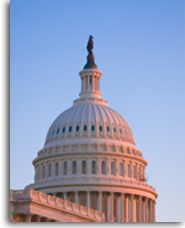From “Elizabeth Warren has a plan to save capitalism: She’s unveiling a bill to make corporate governance great again.” by Matthew Yglesias at Vox: “Elizabeth Warren has a big idea that challenges how the Democratic Party thinks about solving the problem of inequality. Instead of advocating for expensive new social programs like free college or health care, she’s introducing a bill Wednesday, the Accountable Capitalism Act, that would redistribute trillions of dollars from rich executives and shareholders to the middle class — without costing a dime…Traditionally, she writes in a companion op-ed for the Wall Street Journal, “corporations sought to succeed in the marketplace, but they also recognized their obligations to employees, customers and the community.” In recent decades they stopped, in favor of a singular devotion to enriching shareholders. And that’s what Warren wants to change…For the biggest corporations, she’s proposing a dramatic step that would ensure workers and not just shareholders get a voice on big strategic decisions…More concretely, United States Corporations would be required to allow their workers to elect 40 percent of the membership of their board of directors.” Warren’s proposal would also “limit corporate executives’ ability to sell shares of stock that they receive as pay — requiring that such shares be held for at least five years after they were received, and at least three years after a share buyback. The aim is to disincentivize stock-based compensation in general as well as the use of share buybacks as a tactic for executives to maximize their one pay.” Yglesias calls Warren’s bill a “a revolution in American business practice to undo about a generation’s worth of shareholder supremacy” and “a revival of the midcentury stakeholder capitalism.”
“Warren’s bill is similar to a bill introduced by Sen. Tammy Baldwin (which Warren co-sponsored) called the Reward Work Act,” adds Paul Waldman in his post, “Democrats do have an agenda, and even some big ideas. Here’s one of them” at The Plum Line. “That one would require that one-third of the seats on a corporation’s board be chosen by workers. While in America this is a radical idea, it’s built on the system in Germany, where it has been successful in both fostering economic growth and keeping corporations from focusing on the ruthless pursuit of short-term profits for a tiny few at the expense of everyone and everything else. (Susan Holmberg of the Roosevelt Institute explains here.)…Late last year, the Republicans gave hundreds of billions of dollars in tax cuts to corporations, with the promise that in their beneficence those corporations would raise workers’ standard of living. It didn’t happen; instead, the corporations put their money into an unprecedented wave of stock buybacks that enhanced the holdings of wealthy shareholders…When a liberal group put the idea of including workers on corporate boards into a poll, it turned out to be enormously popular…Republicans would recoil in horror at the idea of changing how corporations work, since their theory of the corporation is that it should have all the rights of an individual but none of the responsibilities. But this is a good example of Democrats coming up with an idea that’s ambitious, meant to address a deep and pressing problem, in line with their values, and compelling to voters.”
Syndicated Washington Post columnist E. J. Dionne, Jr. writes that “Democrats have a chance to shape politics for a decade,” and notes: “Republicans control 33 governorships to only 16 for the Democrats, with one independent in Alaska. Democrats are defending just nine governorships this year, and only four seem competitive. Cook rates Minnesota along with Connecticut as the most vulnerable Democratic-held seats, one reason the party welcomed the GOP primary results. Colorado and Oregon also look to be closely contested…On the other hand, 11 of the Republicans’ 26 governorships at stake this year appear vulnerable. Illinois and New Mexico already lean Democratic, and seven others are toss-ups. These include the powerhouse states of Florida, Michigan and Ohio. The GOP will also have to struggle to hold on to Wisconsin and Georgia.”
Kyle Kondik adds in his article, “The Governors: Ratings Changes Abound: Democrats positioned to make gains on a map featuring lots of competition” at Sabato’s Crystal Ball: “Alaska happens to be the top Republican pickup opportunity in the country…The deadline for candidates to remove themselves from the ballot is Sept. 4. If this remains a three-way race after that date, we likely will favor the GOP going forward…Most of the states that are likeliest to flip are already held by Republicans, meaning that the Democrats could have considerably more governorships next year than they hold now (if they don’t, this year will have been a giant missed opportunity for Democrats)…We have previously pointed to five big states as a way to measure which side “wins” this November in the gubernatorial battle: Florida, Illinois, Michigan, Ohio, and Pennsylvania. The GOP currently holds all but Pennsylvania, a Likely Democratic hold. Democrats are also favored in Illinois. That leaves Toss-ups in Florida, Michigan, and Ohio. We figure the Democrats should win at least one — Michigan is the likeliest, in our estimation — and possibly more. So that’s a long way of saying that the gubernatorial races, on balance, seem to be going decently well for Democrats…”
In her article, “Pelosi has decided to make ethics a core pillar” at The Hill, Melanie Zanona writes that “House Minority Leader Nancy Pelosi (Calif.) is moving full steam ahead on a Democratic strategy to paint the GOP as corrupt ahead of the midterm elections, a case that got new legs after the arrest of Rep. Chris Collins (R-N.Y.) on insider trading charges last week…Pelosi has decided to make ethics a core pillar of House Democrats’ push for the majority this fall, seizing on Collins’s arrest in a way she hasn’t done with past GOP scandals involving Trump administration officials…But with Collins, a sitting member of Congress and Trump’s earliest congressional backer, Pelosi believes that Democrats have a ripe opportunity to draw a connection between the president and House Republicans who are on the ballot this November…“The Democrats, through the Democracy Reform Task Force, have really positioned our caucus well, and our candidates in the field well, to push the anti-corruption framework to say we stand against a rigged system,” Sarbanes said. “We wanted to assemble a robust effort on that front…I think we are well equipped now to make that case to the electorate,” he added.”
Some telling stats in this “Year of the Democratic Women” by Krista Carothers at democrats.com: “According to the candidate-tracking project (a collaboration between POLITICO, the Center for American Women and Politics at Rutgers, and the Women in Public Service Project at The Wilson Center), only 35 Republican women have won House primary races as of July 25, compared with 122 Democratic women…What’s more, there just aren’t as many women in the Republican party as there are among the pool of Democrats. Pew Research Center survey results in the spring showed that 56 percent of women identify as Democrats or lean Democratic (up four percentage points since 2015), compared with 37 percent who identify or lean toward the Republican party. A key stepping-stone to running for national office is experience on a state legislature, but according to fivethirtyeight.com, only 17 percent of Republican state legislators are women, compared with 36 percent of Democratic state legislators.”
Thomas L. Friedman’s “What if Mother Nature Is on the Ballot in 2020? Democrats could have a strong issue to run on if the extreme weather persists and President Trump continues to dismiss climate change” at The New York Times addresses a growing concern of voters. As Friedman writes, “Democrats have been casting about for a big idea to propel them in 2020. My free advice: If Democratic socialism or Democratic Trotskyism or abolishing ICE — the Immigration and Customs Enforcement agency — is what will get you elected as a Democrat in your district in 2018, go for it. The Democrats must take the House back. But Trump would feast on those issues in a national election…However, if in 2020 we’re in the midst of even more damaging droughts and storms than we are today, Democrats may be able to run against Trump’s make-America-polluted-again environmental strategy…or seize the incredible opportunity it offers America to become richer, healthier, more secure and more respected by leading the world in clean energy technologies…The Democratic strategy should be built around putting together the performance standards, research and carbon pricing to achieve what Energy Innovation C.E.O. Hal Harvey calls “the four zeros.” These are, Harvey explains: 1. “A zero-carbon grid. Right now, Republican states like Texas and Wyoming dominate the U.S. wind industry and are reaping most of the jobs and environmental benefits. That should go national. 2. Zero-emission vehicles. When you combine a zero-carbon grid with electric vehicles, bingo, you have zero-carbon transportation. 3. Zero-net energy buildings…4. Zero-waste manufacturing. New techniques in manufacturing, such as 3-D printing or advanced chemistry, can slash waste — and waste is a tax on both the budget and the earth.”
Politico’s Steven Shepard discusses three new polls which indicate that “Democrats are cutting into the GOP’s longstanding turnout advantage in midterm elections, another encouraging sign for the minority party’s hopes of winning the House in November.”According to a POLITICO/Morning Consult poll released yesterday, “With public interest in the midterms increasing as autumn approaches, our polling shows Democrats and Republicans are about evenly matched in voter enthusiasm,” said Tyler Sinclair, managing director of Morning Consult…If high levels of voter excitement continue to November, it could lead to greater turnout at the ballot box. Only 41.9 percent of eligible voters turned out in the 2014 midterms, according to the U.S. Census Bureau’s Current Population Survey — less than 45.5 percent in 2010 and 47.8 percent in 2006. A CNN poll affirmed a statistical tie in “enthusiasm,” while a Quinnipiac University poll gives Dems a ten-point edge over Republicans among the “extremely motivated to vote in 2018” identifier.










